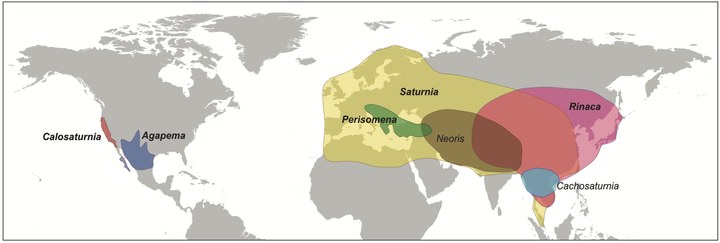Systematics and biogeography reciprocally illuminate taxonomic revisions in the silkmoth genus Saturnia (Lepidoptera: Saturniidae)
 Image credit: C Doorenweerd
Image credit: C DoorenweerdAbstract
The Holarctic Saturniid genus Saturnia contains eight subgenera, though their taxonomic ranks have been in flux for decades. A prior biogeographic analysis with a six gene molecular phylogeny of Saturnia including 34 species and representatives of all but one subgenus supports distinct divisions that require taxonomic changes to accurately reflect their biology and phylogeography. In the current study, we add more publicly available COI sequence data to the previous dataset, and include all subgenera, which resulted in a dataset with approximately 67 species. Based on inferred phylogenies of the 34-species and 67- species datasets as well as the biogeographic analyses, we propose to elevate six subgenera to genus level: Agapema Neumoegen & Dyar 1894 stat. rev., Cachosaturnia Naumann, Löffler & Nässig 2012 stat. nov., Calosaturnia Smith 1886 stat. rev., Neoris Moore 1862 stat. rev., Perisomena Walker 1855 stat. rev., Rinaca Walker 1855 stat. rev. Additionally, we synonymize Eudia Jordan 1911 syn. nov. with Saturnia Schrank 1802 because it renders Saturnia paraphyletic, and confirm the previous synonymization of Eriogyna Jordan 1911 with Saturnia and of Caligula Moore 1862 with Rinaca Walker 1855. With these changes, molecular phylogeny and biogeographic analysis has informed taxonomy of a prominent, but poorly-understood group and revealed how the complex biogeography and active biotic exchange across the northern hemisphere has promoted diversification in previously unrecognized groups.